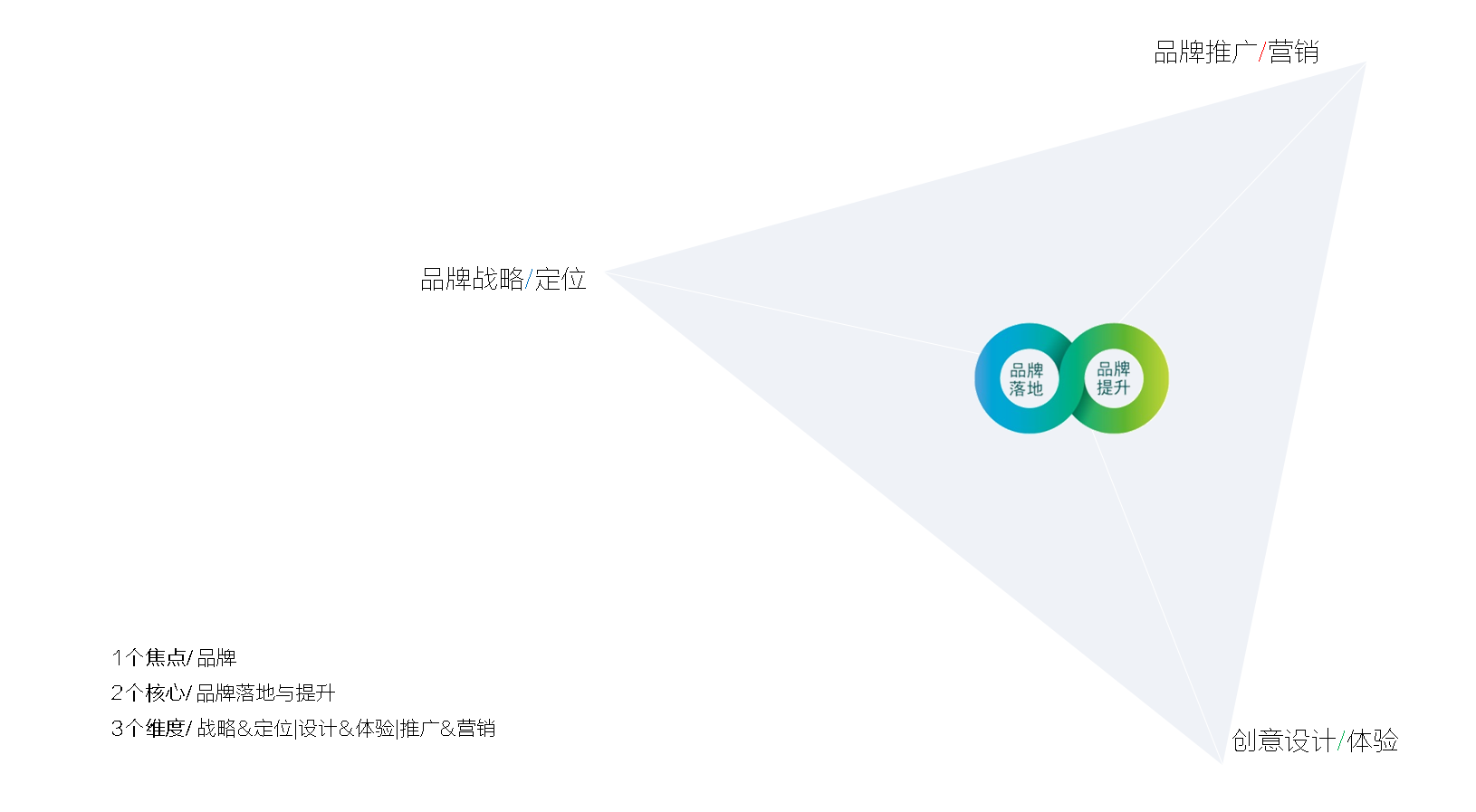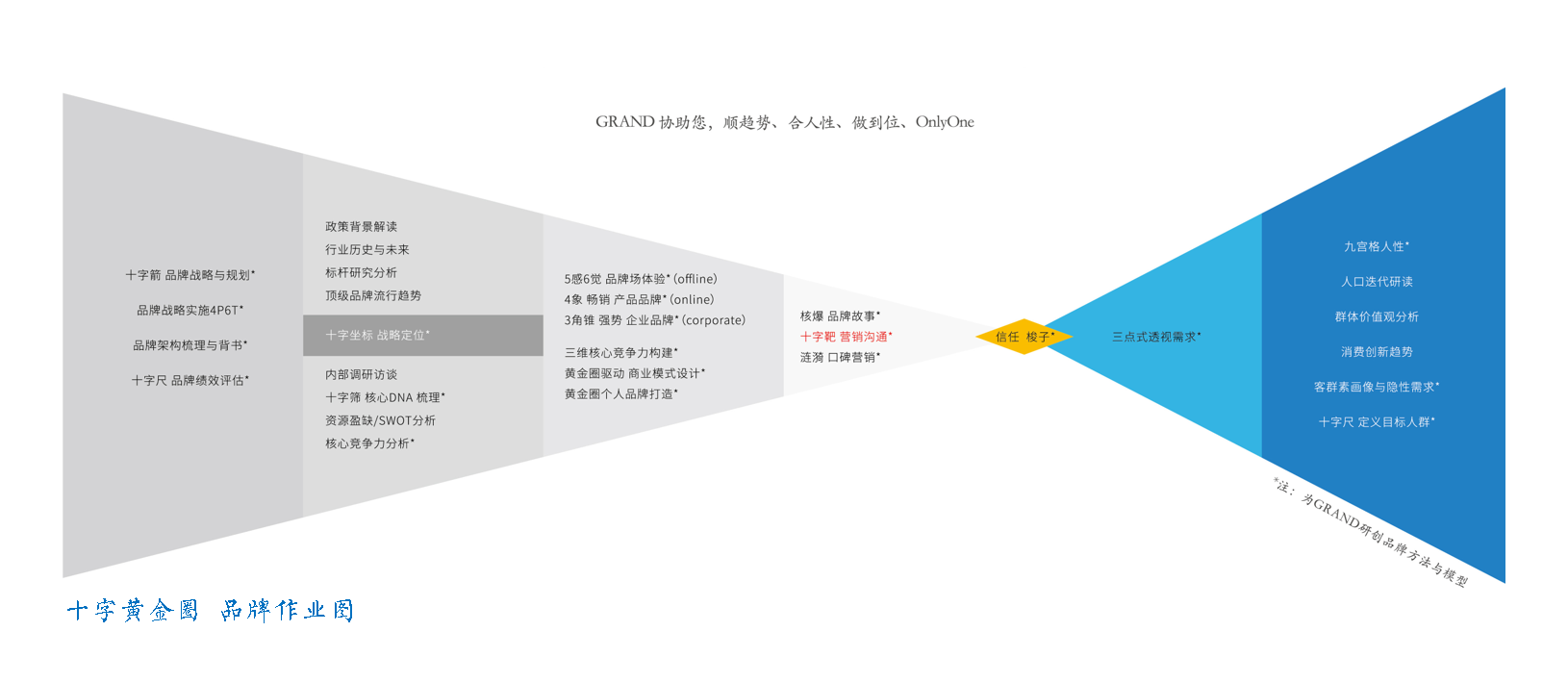销售额突破6亿元,增长率为185.4%
重新定义家用活性炭包,聚焦核心,有序增减SKU,京东平台品类占有率超过62%,畅销产品点评超过137万+,销售额突破6亿元。
链接详情
我们致力于服务:有强烈企图心
----“成为行业领导者”的客户,
以共生共胜的战略合作伙伴角色为客户长久提供:
品牌战略定位作为精准出发点,
营建品牌独一无二的设计与体验,
实施三“口”品牌传播与营销这三个维度的咨询服务,
最终实现“让品牌更有溢价值”的使命。

双核三维服务 GRAND关注一个焦点----品牌, 从事品牌落地与品牌提升两类工作, 协助客户解决品牌战略&定位、创意设计&体验、推广&营销三个问题。

三维之品牌战略/定位 清晰的品牌战略,会勾勒出品牌未来的愿景目标,并将之分解具体可描述的目标,为品牌发展给出准确无误的方向。 品牌战略主要是对内部起到激励主体要素的每一位成员将愿景转化为前进的动力。 精准的品牌定位,会清晰准确地知道自己现在的位置坐标,未来想到达目标点位置,两点一线就是品牌落地实施的路径。 三维之创意设计/体验 完美的品牌识别,将通过创意设计色彩、图形、底纹、名称、符号、logo、VI、产品包装等信息接触点,清晰准确地彰显品牌个性与价值主张。 美好的品牌体验,会在“品牌场”中通过“五感六觉”向进入者潜移默化地渗透品牌认知与感受,进而形成独一无二的体验。 三维之品牌推广/营销 如果说品牌战略定位,是确定了方向目标点的问题,品牌识别体验是解决消费过程中的体验感受,那么品牌推广营销就是广而告之进而买之信之。 好的推广,不是推产品,推的是一种美好的主张,有吸引力的品牌价值主张;好的营销,不仅仅是销售,更是默默地销售了背后品牌的溢价值。


1996年,在英国的游子心中有个grand品牌帝国;
2003年,小小工作室经常服务英、意、德等国品牌;
2006年,在北京设立代表处,研究中国市场与消费者;
2009年,Grand正式进入中国为客户提供服务;
2011年,品牌工具及DNA作业法在中国市场中熟稔应用, 荣获了中国商业联合会颁发“星级品牌咨询机构”;
2012年,品牌落地体系及提升体系成形,服务于世界500强、大型国央企,连获“星级品牌咨询机构”;
2013年,第八届亚洲品牌年度盛典颁发:亚洲品牌管理优秀人物和中国年度十大新势力品牌机构两项大奖;
2017年,“品牌咨询黄金圈+”成型,在中粮、首创、八达岭等百亿级企业中践行;
2020年,疫情之下的世界停摆,但思索没有停止,“十字黄金圈”系统成形;
未来,期待“黄金圈”,成为与“定位”齐名的划时代理论,与更多的品牌共生、共胜 ,共盛...

Copyright © 2006-2025 版权归高兰博蓝(北京)国际管理咨询有限公司 京ICP备11007546号
GRAND GROUP 旗下品牌咨询板块 咨询 010-52876181